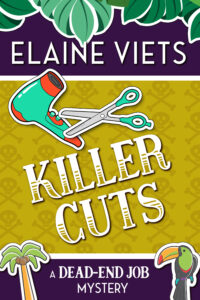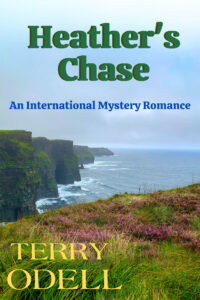 Smell is often underused in novels. Yet it can be the most powerful of all the senses for readers. Certain scents arouse memories from a special time in our lives.
Smell is often underused in novels. Yet it can be the most powerful of all the senses for readers. Certain scents arouse memories from a special time in our lives.
On this Reader Friday, please share a smell that transports you to the past, and why.

Success, by definition, means different things to different folks. Most writers probably see “success” as being published—repeatedly. They work hard, take risks, and accept that being exposed to failure is part of success. They’re confident souls and keep-on-writing regardless of what others think. Then, there are those who outwardly “make it” but, deep inside, see themselves as imposters.
Yesterday morning, I was reading an online article at Global News which is one of Canada’s leading media sites. The piece was occasionally interrupted with paid ads by prominent players like Ford, Ikea, Microsoft, Audible, and Formica who financially support Global so they can survive in the commercial news biz. All of a sudden I went, “Whoa! Am I really seeing this?”
 Before my eyes was an advertisement from Rakuten Kobo, and there was the cover of my newest publication. Kobo chose my book Between The Bikers as their featured promotion and exposed it before I don’t know how many critical eyes. And this Global ad was bought and paid for by Kobo—not me. I knew nothing about the promo before stumbling upon it.
Before my eyes was an advertisement from Rakuten Kobo, and there was the cover of my newest publication. Kobo chose my book Between The Bikers as their featured promotion and exposed it before I don’t know how many critical eyes. And this Global ad was bought and paid for by Kobo—not me. I knew nothing about the promo before stumbling upon it.
I said to Rita, “Well, will you look at this…” My wife glanced, smiled, and replied, “You’re quite the success.” I had to agree, but then I immediately thought of an earlier email exchange with a highly successful UK writer friend who told me he suffers from Imposter Syndrome (IS).
Before going into what Imposter Syndrome might be, I had to click on Dictionary.com for two definitions:
Success — noun
Imposter — noun
This got me thinking, What if I’m just an imposter, a bullshit clown, and this Kobo recognition hasn’t been honestly earned? I know that friends, family, and former police colleagues—as well as fellow writers—are going to see this thing, click on it, and expose me for what I might truly be. Oh, the humiliation…
 I don’t know who, or how many, saw the Kobo ad. I guess upcoming stats will tell if the promo was successful, but the startling experience made me think of my UK friend and what was going on with his IS insecurity. So, I did some Googling and came up with a fascinating article and self-examination on the New York Spirit psychology-therapy site titled What Is Imposter Syndrome? It opens like this:
I don’t know who, or how many, saw the Kobo ad. I guess upcoming stats will tell if the promo was successful, but the startling experience made me think of my UK friend and what was going on with his IS insecurity. So, I did some Googling and came up with a fascinating article and self-examination on the New York Spirit psychology-therapy site titled What Is Imposter Syndrome? It opens like this:
“Welcome to the world of the Imposter Syndrome. It is a secret world, inhabited by successful people from all walks of life who have one thing in common – they believe that they are not really good enough. They might be men or women, young or old. And imposter beliefs are not always related to work; I have met ‘imposters’ who feel they are not good enough parents, husbands, wives, friends or even not good enough human beings. These are all variations of Imposter Syndrome, especially when there is little objective evidence to support the sufferers firmly held self-beliefs that they are frauds.
The term ‘Imposter Syndrome’ or ‘Imposter Phenomenon’, was first coined in 1978 by clinical psychologists Pauline R. Clance and Suzanne A. Imes in a paper entitled ‘The Imposter Phenomenon in High Achieving Women: Dynamics and Therapeutic Intervention’.
The condition was described as being ‘an internal experience of intellectual phonies’ that afflicted some high-achieving women. In their paper, Clance and Imes described their sample group of 150 women as follows, ‘despite their earned degrees, scholastic honors, high achievement on standardized tests, praise and professional recognition from colleagues and respected authorities… [they] do not experience an internal sense of success. They consider themselves to be “impostors”.’ They go on to explain that these women believe they have only achieved their success due to errors in selection processes, or because someone has overestimated their abilities, or that it is due to some other external source.”
Drs. Clance and Imes list three characteristics that define Imposter Syndrome:
 The New York Spirit piece notes that Imposter Syndrome isn’t a recognized mental health condition. (I checked with the DSM-5 and it’s not.) However, through Wikipedia I found a book by researcher Valerie Young titled The Secret Thoughts of Successful Women: Why Capable People Suffer From the Impostor Syndrome and How to Thrive in Spite of It. In her book, Ms. Young identified five subgroups this syndrome falls into.
The New York Spirit piece notes that Imposter Syndrome isn’t a recognized mental health condition. (I checked with the DSM-5 and it’s not.) However, through Wikipedia I found a book by researcher Valerie Young titled The Secret Thoughts of Successful Women: Why Capable People Suffer From the Impostor Syndrome and How to Thrive in Spite of It. In her book, Ms. Young identified five subgroups this syndrome falls into.
Ms. Young states more than 70% of people experience impostor syndrome at some point in their career. That’s regardless if they’re a rocket surgeon, brain scientist, or crime/thriller/mystery writer.
Back to the New York Spirit article. I love quizzes and was most interested in taking their short self-assessment to see whether or not I had Imposter Syndrome. This is how NY Spirit described it: This quiz is based on the common symptoms outlined above and is not meant to be a diagnostic mental health tool, but rather a quick and simple way to ascertain to what degree you feel like you are an imposter. It goes like this…
How easy do you find it to accept praise?
Very hard — 1 Quite hard — 2 Quite easy — 3 Very easy — 4
When you do something well, how likely are you to dismiss it as not really much (eg it was easy, anyone could have done that, it was nothing special).
Very likely — 1 Quite likely — 2 Not very likely — 3 Not at all likely — 4
When you do something well, how likely are you to attribute your success to luck?
Very likely — 1 Quite likely — 2 Not very likely — 3 Not at all likely — 4
When you do something less well, how likely are you to attribute your failure to luck?
Not at all likely — 1 Not very likely — 2 Quite likely — 3 Very likely — 4
When you perform poorly, or fail, how likely are you to attribute your failure to your own lack of skill or not working hard enough?
Very likely — 1 Quite likely — 2 Not very likely — 3 Not at all likely — 4
When you do something well how likely are you to attribute your success to other people’s input (‘they helped me’)?
Very likely — 1 Quite likely — 2 Not very likely — 3 Not at all likely — 4
When you do something poorly how likely are you to attribute your failure to other people (‘it was their fault’)?
Not at all likely — 1 Not very likely — 2 Quite likely — 3 Very likely — 4
How important is it for you to be the best at something that matters to you?
Very important — 1 Quite important — 2 Not very important — 3 Not at all important — 4
How important is success for you?
Very important — 1 Quite important — 2 Not very important — 3 Not at all important — 4
How likely are you to focus on what you have not done well compared to what you have done well?
Very likely — 1 Quite likely — 2 Not very likely — 3 Not at all likely — 4
How important is it to you to find a ‘hero’ to befriend and impress?
Very important — 1 Quite important — 2 Not very important — 3 Not at all important — 4
How often do you feel afraid to express your views lest people discover your lack of knowledge?
Very often — 1 Quite often — 2 Not very often — 3 Not at all/rarely — 4
How often do you find yourself unable to start a project for fear of failing?
Very often — 1 Quite often — 2 Not very often — 3 Not at all/rarely — 4
How often do you find yourself unwilling to finish a project because it isn’t yet good enough?
Very often — 1 Quite often — 2 Not very often — 3 Not at all/rarely — 4
How happy are you to live with a piece of work you have done that you know isn’t perfect?
Not at all happy — 1 Not very happy — 2 Quite happy — 3 Very happy — 4
How often do you find yourself thinking that you are a fraud?
Very often — 1 Quite often — 2 Not very often — 3 Not at all/rarely — 4
How worried are you that your lack of skill/talent/ability will be discovered?
Very worried — 1 Quite worried — 2 Not very worried — 3 Not at all worried — 4
How important is validation from others to you (e.g. praise)?
Very important — 1 Quite important — 2 Not very important — 3 Not at all important — 4
According to the piece, the lower your numeric score, the more likely it is you have Imposter Syndrome. The scoring range is from 18 to 72 and (as a rough guide) any score below 36 indicates some sort of IS element is going on in your personality. Again, this is not an accredited test and has to be looked at with a bit of “ooo-kaaay…”.
You’re probably wondering how I made out. I tried to be as honest as possible, and I scored 55. I suppose that indicates I’m relatively comfortable with my butt in the chair with my fingers on the keys. What about you? Go ahead. Take the IS quiz and share your score with your fellow Kill Zoners.
Another thing for Kill Zoners… how do you define “success”? While I was surfing the New York Spirit site, I found an article by Jessica Kitching titled How Do We Measure Success? In it, she says, “If you wake up with a passion for what you do, a purpose that excites you, and a momentum to keep going, then you are a success. I am not ashamed to label myself a writer. I am a writer. I love what I do. How many other people can say that?”
* * *
 Garry Rodgers is a retired homicide detective with a second career as a coroner. Now, Garry has reinvented himself as a crime thriller writer who masquerades as a commercial success.
Garry Rodgers is a retired homicide detective with a second career as a coroner. Now, Garry has reinvented himself as a crime thriller writer who masquerades as a commercial success.
He lives on Vancouver Island at British Columbia’s southwest coast and regularly imposters as an old boat skipper. Visit DyingWords.net which is the real website and popular blog for Garry Rodgers.
I just submitted the manuscript for Stealth Attack (July, 2021), the 14th installment of my Jonathan Grave series. As I await the copy edits, it’s time to embark on the second book of my new Victoria Emerson thriller series.
Every book I write begins by typing the words, Chapter One, written in bold type, centered on the top of page one. It is the only chapter I number as I write. Subsequent chapters are labeled Chapter with a space next to it, pre-formatted in bold face type. My very last chore before submitting a manuscript is to type in the chapter numbers. And yes, inexplicably, it’s important to me that the number be written out, as in Chapter Thirty-seven.
I also type the phrase, THE END, all in caps at the bottom of the final page. It’s cathartic. And it guarantees the copy editor at least one line to delete–as if there aren’t many, many others.
There is one very practical reason for leaving all but the first chapter unnumbered: The first chapter of the next book appears as a teaser at the end of the most recently published book. And it’s a payment milestone.
Here’s the thing, though: That teaser chapter often does not survive my ongoing writing/editing process. It always changes–sometimes significantly–and if it survives it is often bumped to later in the book. I can’t remember if it was on Amazon or Goodreads, but one reviewer pummeled me for un-shooting a character who was shot in the teaser for Hellfire. A lot can happen in eleven months and 100,000 words.
I’ve learned over the years that it’s sufficient to submit a first chapter for the teaser. It needn’t be the first chapter.
We’ve established here before that I am not an outliner. But I’m not really a pantser, either. Before I type those first two words, I know basically where the story is supposed to go–what the stakes are–but when I start writing, I have no idea how I’m going to make those things happen. This is why that first chapter evolves so much or occasionally doesn’t survive final edits. If I’ve started a story in the wrong spot, I generally won’t realize it until I’m around page fifty or so.
I know going in that Jonathan Grave’s world is populated by four main characters, each of whom has to have something to do by way of progressing the story. Then there are a couple of very popular supporting players that I try to bring into each installment. And the dog. I always get a few emails from concerned readers if JoeDog does not make an appearance.
Chapter One provides limitless opportunity, but it also poses limitless challenges. Yesterday, PJ Parrish wrote about the importance of verbs. (A brilliant piece, by the way.) I concur whole-heartedly, but in the vast emptiness on the far side of those initial opening words, thousands of other words await to be chosen, embracing every part of speech that need to be selected from among what feels like an infinite set of variables. If writing a book were a math problem, it would be unsolvable.
My next move is to step off the cliff. To write something. At this stage, it doesn’t matter if the words that spill out are utter crap. That’s part of my process. For me, creativity in general–and writing in particular–is a flow. Typing those first words is like priming a pump. The process will cavitate and make ugly sounds at first, but then we’ll get the bubbles out of the system and good thoughts will start to flow.
Then, on the good days, I’ll be so inside the scenes I’m writing that I’ll merely be channeling thoughts through my fingers. On those days, the spelling is atrocious and words are often dropped, but the story is there. And by story I mean characters I know doing things I understand for reasons that excite me.
As I write this, I realize that I have discovered for the first time why I can write the last one-third of a book in thirty days or so. At that point, I’m no longer writing–I’m merely reporting what I see. And somehow, usually just a day or two before my deadline, it all works out.
And then it’s time to do it again.
What about you, TKZ family? Got any quirky superstitions or must-do habits when launching into a new project?
“The world is a hellish place, and bad writing is destroying the quality of our suffering. It cheapens and degrades the human experience, when it should inspire and elevate.” — Tom Waits
By PJ Parrish
To be, or not to be? Nah, that’s too mundane for a novel. Even though it did work for Dr. Seuss. How about “exist?” That’s a nice variation. On second thought, it sounds too Descartes-desperate for a thriller. Sigh. Well, that leaves me with…”I live.” Good grief, as I live and breathe, why is it so hard to find the right verb?
You’d think this would be easy. Pick a noun, pick a verb. Repeat until you’ve written oh, about 300 pages that might resemble a novel.
But it’s not easy. Verbs are the lifeblood of what we do. The good ones juice up our writing and help readers connect with our plots and characters.
Here’s something I’ve found: Inexperienced writers tend to be content with the first verb that pops into their head. Heck, experienced writers, in the blind heat of the first draft, do this. (my go-to crutch verb is “turned.”) Often, when you’ve latched onto a dull verb, your subconscious writer mind knows it and desperately tacks on an adverb. “He said” becomes “he said sagaciously.” Lipstick on a verb-pig.
I’ve been thinking a lot about verbs this week. Partly, because I have been trying to brush up on my French via Babbel online courses. My brain aches because of this. Verbs are important to the French and they take their conjugations very seriously. One slip of the reflexive and you’re in deep merde. (More on that later).
But verbs are on my mind also because a friend, novelist Jim Fusilli, posted on Facebook a terrific article by music producer Tony Conniff called “In Praise of Bob Dylan’s Narrative Strategies…and His Verbs.”
Now, I am not a huge Dylan fan, but I do appreciate that he is a poet. (officially). And as I read Conniff’s analysis of the song “Tangled Up In Blue,” I understood how powerful the right verb in the right place can be. Take a look at just one verse of the song:
She was married when they first met
Soon to be divorced
He helped her out of a jam,
I guess, but he used a little too much forceThey drove that car as far as they could
Abandoned it out West
Split up on a dark sad night
Both agreeing it was bestShe turned around to look at him
As he was walkin’ away
She said this can’t be the end
“We’ll meet again someday on the avenue”Tangled up in blue.
Conniff says that most of the story is conveyed in vivid verbs — the action, drama, conflict and emotion. “The verbs tell the story,” he writes, “the story of how being with this other woman, probably for a one-night stand, led his thoughts back to the one he couldn’t forget or let go. Every verse, every chapter of the story, leads back to the same woman and the same impossible emotional place—Tangled Up In Blue.”
For my part, I love the title itself because in just four words and one great verb, Dylan captures the entire mood of his story. The man isn’t just upset about losing a woman. He’s not merely sad about an affair gone bad. He’s tangled up in blue, caught in a web of regret over the love he let slip away.
The right verb gives your story wings. The wrong verb keeps it grounded in the mundane.
Now here’s the caveat. (You know I always throw one out there.) Not every sentence you write needs a soaring verb. “Said,” as we’ve said over and over, is a supremely useful verb that, rightfully so, should just disappear into the backdrop of your dialogue. And in narrative, when you’re just moving characters through time and space, ordinary verbs like “walked,” “entered,” “looked” do the job. If you try to make every verb special, you can look pretentious and, well, like you’re trying to hard. Sometimes, smoking a cigar is just smoking a cigar.
Let me give you some examples off my bookshelf of verb-age that works:
Here’s the ending of Chester Himes’s short story “With Malice Toward None.” Himes’s verb choices convey the mood of a defeated man whose soul-killing WPA job is driving him to drink and to distance himself from his materialistic wife:
He wheeled out of the room and downstairs away from her voice but at the door he waited for her. “I’m sorry, baby, I — ” then he choked with remorse and turned blindly away.
All that day, copying old records down at city hall, half blind with a hangover and trembling visibly, he kept cursing something. He didn’t know what exactly it was and he thought it was a hell of a thing when a man had to curse something without knowing what it was.
This is from John D. MacDonald’s The Deep Blue Goodbye, showing how strong verbs can spice up your descriptions. McD didn’t give us much description but when he did it came with sweet economy.
Manhattan in August is a replay of the Great Plague of London. The dwindled throng of the afflicted shuffle the furnace streets, mouths sagging, waiting to keel over. Those still healthy duck from one air-conditioned oasis to the next, spending minimum time exposed to the rain of black death outside.
Verbs are important in action scenes. Here we are, in a good one from James W. Hall’s Off The Chart:
On the top rung of the rope ladder, Anne Bonny paused and found her breath. Head down, crouched below the gunwale, she gripped her Mac-10, formed a quick image of her next move, then sprang and tumbled over the rail, ducking a shoulder, slamming into the rough pebbled deck, and rolling once, twice, a third time until she came to rest against an iron wall.
I like the mix of mundane verbs like “paused” and “formed a quick image” next to the hyperactive verbs like “sprang” and “tumbled.”
And here’s a paragraph from SJ Rozan’s novel Absent Friends, where a character remembers the September 11 attack:
Phil had been caught in the cloud on September 11, running like hell with everyone else.
His eyes burned, his lungs were crazy for air. A woman next to him staggered so he reached out for her, caught her, forced her to keep going, warm blood seeping onto his arm from a slash down her back as he pulled her along, later carried her. Somewhere, someone in a uniform took her from him, bore her off someplace while someone else pressed an oxygen mask to his face. He breathed and breathed, and when he could speak, he asked about the woman, but no one knew.
The lesson here is, the more intense your scene, the more measured you should be in your verb choices. Trust the reader to intuit, to imagine between the lines. “Running like hell” is cliche but it works because it is true to Phil’s voice. It sounds like his thoughts. Notice, too, SJ’s repeated use of the ambiguous words — someplace, someone, somewhere — to capture the chaos, rather than hitting the reader over the head with something like: “He felt confused and disoriented.”
And let me add one more quick example that James Bell quoted here on Sunday, in his post about deep back story, from a Stephen King short story. One line jumped off the page for me:
Sometimes they discussed children puddling along the wet sand with the seats of their shorts and their bathing suits sagging.
God, that’s great. It’s not even a real verb, but can’t you just see those kids on the beach?
Okay, an exercise! Let’s use the poor old verb “walk” as a lesson here. Your character is a sophisticated spy entering the Casino de Monte-Carlo to meet the evil villain Emilio Largo. He’s not just walking in; it’s a grand entrance that sets up the next plot point. How do you describe this?
I like No. 1 for its spare feel. It imparts only the bare choreography. You’d have to find other ways to convey the tension and the hero’s intent. No. 2 relies on a tacked-on adverb to convey Bond’s attitude. It works okay, imho. No. 3 is tone-deaf and over-wrought. “Sauntered” is an okay verb but way too twee for Bond. And then we get hit over the head with the king metaphor, made even worse by the panther nonsense. If your verbs are strong, you don’t need to surround them in a thicket of thorny metaphors. No. 4 works, imho, but I’d try to make it better on second draft.
I will leave you with one last thought about getting your verbs right. When I first started learning French, my teacher warned us that French is filled with faux amis — false friends. Some verbs look correct but become something entirely else if you mess up the pronunciation or use the wrong tense.
One day in class a guy, speaking in halting French, said that last night his girlfriend kissed him goodbye. Our teacher laughed and we all just looked at each other, confused. In French, a kiss is “un baiser.” So the guy assumed the right verb was “baisser.” Which correctly means that last night he was…screwed.
A sigh is just a sigh, But a kiss isn’t always just a kiss.
A desperate writer sent me this email. “I am having difficulty getting back to my story,” he said. “Maybe it’s Covid hangover…. I need to rewrite some stuff in my earlier chapters and I can’t get into it. Argh!!! So tell me, is this common?”
You bet. I’ve been stuck, too – and many of my writer friends are tearing their hair out. Some are so desperate, they’re threatening to give up writing. Blame it on Covid-19, your day job, your kids, (insert your worry here), we’re not keeping those computer keys clacking.

I was in a deep funk for three weeks before I finally broke out of it.
Here’s how I got back to writing.
My next Angela Richman, Death Investigator mystery is due in January. I was off to a good start – I crafted the plot, created a catchy opening chapter, introduced the main characters, figured out who was the killer, all the things writers do when we’re starting a new book. I happily banged out six chapters. And then . . .
The words dried up.
I couldn’t go forward. I tore up chapter after chapter. I stared at the screen, willing the words to form on the page. The blank space taunted me.
I paced the house. I surfed the Net, looking at cute cat pictures. I fell for click bait (Did you know the Princes in the Tower may be buried in Westminister Abbey, but Queen Elizabeth won’t let anyone test their DNA?). I ate half a pound cake. Still nothing.
Gloom descended, and it didn’t help that Hurricane Eta was bearing down on South Florida, bringing lashing rains and flooded the streets.
Last Saturday, I went to a Sisters in Crime chapter Zoom meeting – a plotting seminar by mystery writer Annette Dashofy. Annette had us plot a mystery, based on her method, and things quickly went off the rails. Our mystery started with a dead female politician who was killed in her office. The awful plot included an unfaithful husband, an ex-stripper boyfriend, a cheating reporter, and an unmentionable murder weapon. The red herrings would leave you red-faced. But we had a lot of laughs. After much laugher – and some very serious plotting strategy – I realized I had a giant hole in my plot. After the meeting, I reworked the plot, put in another murder and more red herrings. The dam broke. I was back writing. I was going forward. I’d been too isolated.
So when you’re stalled:
(1) Talk to other writers.
Many writers are solitaries, but we need to talk to our own kind. We used to do that at chapter meetings, conferences and mystery conventions, but those are canceled thanks to the pandemic.
 When you’re stuck, schedule a Zoom meeting or set up a FaceTime chat. Talk over tea. Make a lunch meet or coffee break. Or my personal favorite, a cocktail hour – a whine and wine session with one or more writer friends.
When you’re stuck, schedule a Zoom meeting or set up a FaceTime chat. Talk over tea. Make a lunch meet or coffee break. Or my personal favorite, a cocktail hour – a whine and wine session with one or more writer friends.
When I was stuck earlier in the year, I had a Zoom lunch with a writer friend and ran my plot past her. She listened carefully and then said, “You know, there’s not a single likeable person in your novel.” She was right. I changed the characters. Thanks to her, I could write again.
(2) After meeting with those writers, my head was buzzing with ideas.
I started taking notes again, always a good sign. My subconscious was working. I keep a notepad on my night stand and write down ideas that I get in the middle of the night. Some of these ideas are useless – I once scrawled “Call California” on a notepad. The next morning, I had no idea what that meant. After all, it’s a big state.
Sometimes, I can’t even read what I wrote.
More most often, I have the start of another chapter, or a nice fat red herring.
(3) Here are some ways to get in touch with other writers:
Sisters in Crime has a number of free seminars on its national Website. https://www.sistersincrime.org/ Also, check with the individual chapters. Sisters in Crime is also sponsoring NaNoWriMo, and it’s not too late to join:
https://www.sistersincrime.org/events/EventDetails.aspx?id=1427737
Most of the Mystery Writers of America chapters have monthly virtual programs. The Florida MWA Chapter has a free virtual program November 21, called “Seriously Series: Why and How to Write Series Fiction” given by Joanna Campbell Slan. Members can sign up here: https://mwaflorida.org/events/monthly-meetings/
The International Thriller Writers Association has their Virtual Winter Thrills Program, Jan. 11 to March 18. You can buy the whole package or choose individual session for $35 each. Here’s the information. https://web.cvent.com/event/8e0e649d-5c1c-4c55-be1c-575146f15ebf/summary?rp=00000000-0000-0000-0000-000000000000
What do you do, TKZers, to break out and break the isolation?
*************
 Need a good laugh? Read KILLER CUTS, my eighth Dead-End Job mystery. Buy the e-book for $1.99 – or free on Kindle Unlimited. https://tinyurl.com/y6yopjkp
Need a good laugh? Read KILLER CUTS, my eighth Dead-End Job mystery. Buy the e-book for $1.99 – or free on Kindle Unlimited. https://tinyurl.com/y6yopjkp
What Winnie the Pooh Taught Me About Writing
Terry Odell
First, on this Veterans Day, a thank you to all who have served.
 When I was a child, my dad would read Winnie the Pooh (the REAL one, not the Disney version) to me and my brother. I loved his voices (Years later, when an old movie was playing on the television, I heard Eeyore’s voice. I ran out to look and it was a W.C. Fields movie. I didn’t know my dad had been doing “real” voices when he read—but I digress.)
When I was a child, my dad would read Winnie the Pooh (the REAL one, not the Disney version) to me and my brother. I loved his voices (Years later, when an old movie was playing on the television, I heard Eeyore’s voice. I ran out to look and it was a W.C. Fields movie. I didn’t know my dad had been doing “real” voices when he read—but I digress.)
Another thing I remember from my dad’s reading was the way he began each chapter in a Very Important Voice. And the way each chapter was titled, “In Which…” followed by a few words telling us what the chapter was about.
(Kind of like “circles and arrows and a paragraph on the back of each one…” but I digress again.)
Although I certainly don’t title my chapters, the “In Which” approach helps make sure I’m putting something on the page that belongs there.
Too often, it’s easy to get carried away with description, or dumping in some back story, or including that “wonderful” scene that came to you when you overheard a conversation at the coffee shop, or salon, or when you were people watching and saw someone who just had to be in the book. So you write it, and it’s wonderful, and you’ve captured the moments perfectly. But is it moving the story. Is it something worthy of including in your “in which” summary of the scene.
Because you should be summarizing the scenes, either before or after you write them. And there need to be plot points (which is the official writerly term for “in which”). You’ll notice I used the plural. A scene had better be carrying more than one. While there’s no rule, and no exact number, I’d recommend shooting for three. Scene length, of course, can cause variations, but whatever happens in that scene needs to relate to the story.
Which brings me to kinds of scenes. Here’s a quick summary, gleaned from a RWA workshop, although most will carry over to any genre.
Do you ever find scenes in books you’re reading, even very well-written scenes, that leave you wondering what they’re doing there? Have you found them while writing your own books?
 My new Mystery Romance, Heather’s Chase, is available at most e-book channels. and and in print from Amazon.
My new Mystery Romance, Heather’s Chase, is available at most e-book channels. and and in print from Amazon.
Terry Odell is an award-winning author of Mystery and Romantic Suspense, although she prefers to think of them all as “Mysteries with Relationships.” Follow her on Facebook and Twitter.
By Debbie Burke
Recently I read an excellent post about flash fiction written by Nancy Stohlman on Jane Friedman’s blog.
One line leaped off the screen:
“Flash fiction has an almost desperate need to tell a story before it’s too late.”
Before it’s too late? What does that mean? Too late for what?
See what Nancy just did?
Something terrible could occur and you better keep reading to find out what it is.
Although Nancy was talking about flash fiction, the same principles apply to longer works.
Thrillers particularly are known for the breakneck pace that grabs readers by the throat and drags them along as the story unfolds.
But other genres can also achieve that compelling, can’t-put-it-down quality.
How does an author capture that sense of urgency?
Try these six tools:
1. Threats
In The Canterbury Tales, Chaucer wrote about the Sword of Damocles:
There was a sharpened sword above his head
That hung there by the thinnest simple thread.
Notice how just reading those lines makes you uneasy. That is the quality you want to provide for your readers.
Threats can start out minor but build to major.
Minor: being late to work.
Major: being late to work after the boss swore to fire you if you’re ever late again.
Minor: getting pulled over by a cop
Major: getting pulled over by a cop with a body in your trunk.
Threat level should increase as the story progresses. You might start with a petty annoyance. By the middle of the story, that annoyance has snowballed into a serious problem. At the climax, that problem has led to utter catastrophe for the character.
Threats need to maintain a consistent undertone of worry throughout the story. They may not always be front and center in the action but they should remain in the back of the reader’s mind, nagging and chafing like a popcorn kernel stuck between teeth.
Readers need to feel the thread is fraying and getting thinner with each chapter.
Is your pacing off or irregular? If so, the cause could be that a small threat occurs after a larger one. That causes a dip in the danger, a lessening of tension. Consider rewriting so each threat is progressively worse than the one before.
Exercise: Make a list of threats in your WIP. What is the overarching threat? What are the lesser threats? Do they build one on top of another, escalating the danger?
2. What else can go wrong?
Each scene needs a purpose or goal for the character to work toward.
By the end of the scene, the character has either achieved the goal or failed.
Or, if s/he achieves the goal, that success leads to new unexpected complications.
At the end of each scene, ask yourself what else can go wrong?
Then make it happen.
Use failure or unexpected complications to propel them into the next scene.
Exercise: Analyze the ending of each scene. How did your protagonist fail? How can you make that failure even more devastating?
3. Juice up the action.
There’s a reason that chase scenes are a popular device in movies. Pursuits make watchers hold their breath at one moment and gasp at the next.
Just for fun, here’s the greatest car chase ever filmed. To skip the preliminaries, jump ahead to 3:30 for the screeching tires.
https://youtu.be/FJZ-BHBKyos
Unfortunately, car chases don’t translate well to novels. But the concept of “pursuit” can still be applied. Harking back to #2, the character is in pursuit of a goal.
Obstacles block his/her pursuit of the goal. They don’t have to be as dramatic as the near-misses, biker slide, or shotgun blasts in Bullitt. But they do have to thwart the character and prevent him/her from achieving the goal of the scene.
Exercise: What hurdles must your character leap over? Don’t have a hurdle? Invent one. When the character leaps, s/he can stumble and fall, physically or metaphorically.
A hint: The faster the action, the more the writer should slow down the description. This sounds counter-intuitive but check out a memorable slow-motion scene from The Untouchables.
Exercise: write this scene, using the same pacing and attention to detail that the camera did. In writing, can you include additional sensory details like smell, taste, and touch?
4. Employ the Hitchcock Factor
Alfred Hitchcock was famous for letting the audience in on secret knowledge that the character onscreen didn’t know.
Think of ways for the reader to know more than the character does. The character opens a door and descends the basement stairs, believing s/he is on the way to do laundry. But the reader knows the villain is lurking under the stairs.
To accomplish that, you might go into the antagonist’s viewpoint and reveal his/her plans to derail the protagonist. The reader knows but the protagonist doesn’t.
Exercise: In your WIP, do you let the reader in on a secret your protagonist doesn’t know? How?
5. Set the alarm
The ticking clock is a standard device to ratchet up tension. But it doesn’t have to be a bomb planted under the baby’s crib, counting down to zero.
Set up a deadline the protagonist must meet. If s/he doesn’t, complications happen, leading to more grief that ultimately could cause him/her to lose everything.
Exercise: If your story doesn’t already have a ticking clock, can you insert one?
Before it’s too late!
6. Cliffhangers
Cliffhangers don’t necessarily mean fingers slipping off the edge.
Unanswered questions are great ways to propel the reader into the next chapter. When you end a scene with a question, the reader must turn the page to learn the answer.
But finding the answer to one question isn’t enough. In the next chapter, the author poses more new questions. Again, the reader must turn the page to find answers that lead to…more questions. And so on and so on to the last chapter when the author finally answers all questions and resolves all problems…or not!
Exercise: Study your chapters. Do they end with questions? Can you think of more intriguing ways to tantalize the reader into the next chapter?
Try these six tools to grab your reader’s attention…before it’s too late!
~~~
TKZers: Have you used any of these techniques? Do you have other tips to add?
~~~
Debbie Burke uses the six tools in the Tawny Lindholm Thrillers with a Heart Series. Quotes from customer reviews: “Getting ready for bed? Don’t start this story!” “Kept me reading all night long.” “Read it in one sitting.” “Impossible to put down.”
Cover art by Brian Hoffman
Despite (or maybe because of) a rather distracting week, I managed to finish the latest mystery by one of my all time favorite writers (I’m not going to disclose the book or author or I’ll have to give spoiler alerts!). However, instead of the usual feeling of contentment that comes from finishing a well-written, masterly plotted mystery, I felt…let down…and it took me a few days to figure out that the major reason for my nagging sense of disappointment was that the novel never really gave me the ending I wanted. Sure there was resolution but there was no justice…and I was surprised at how much that altered the whole reading experience for me.
Don’t get me wrong, the novel had great characterization and a well-paced investigation, it was beautifully written and often poignant, but in the end the perpetrators of the crime never really faced any real consequences, and certainly no punishment. This got me thinking about reader expectations when it comes to the whole mystery/crime genre and also whether, given how much the genre has changed over the years, writers still need to end their novels with a sense that justice (whatever that might mean) has been served.
Like many other readers, part of the reason I read mysteries is to get the satisfaction that comes from seeing justice served (something that all too often does not occur in real life). There is something very affirming about ‘good’ winning out in the end – even if that ending is messy or morally compromising. Once I begin to read a mystery novel I place my trust in the writer that the crime/mystery will ultimately be solved and that the person(s) responsible will be brought to account – but how do I (as both a reader and writer) feel about a resolution that omits ‘justice’ and ‘punishment’? I’m still not sure.
When it comes to this particular book at least, it was about managing reader expectations. I was expecting a murder mystery and though I got one, I didn’t get the ending I was expecting, and as a result, I felt the whole book tainted by a lack of a satisfying resolution. I think this disappointment says a lot about how writers need to manage reader expectations and also, perhaps, the strengths and limitations of the genre itself (for instance if I had considered this literary fiction I might not have expected the same kind of ending as I would with a mystery).
So TKZers what do you think -do you still expect or demand to see justice served in a mystery novel? How much leverage do you give when it comes to endings/resolutions in a mystery/crime genre novel? Am I just being old fashioned or is justice and/or punishment even needed anymore?
 As a reader, are you a loyal fan? Let’s test that loyalty. 🙂
As a reader, are you a loyal fan? Let’s test that loyalty. 🙂
Suppose your favorite author switches genres, from gritty thrillers or sci-fi to YA or HEA romance.
Would you continue to read their books?
What if they never returned to the genre you love?
“Depends” is not a complete answer. Please explain.